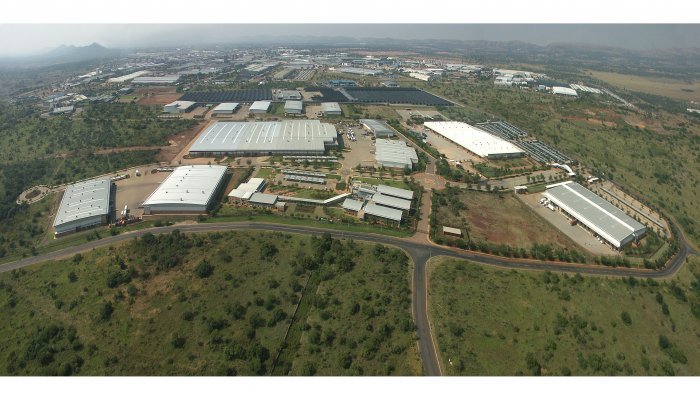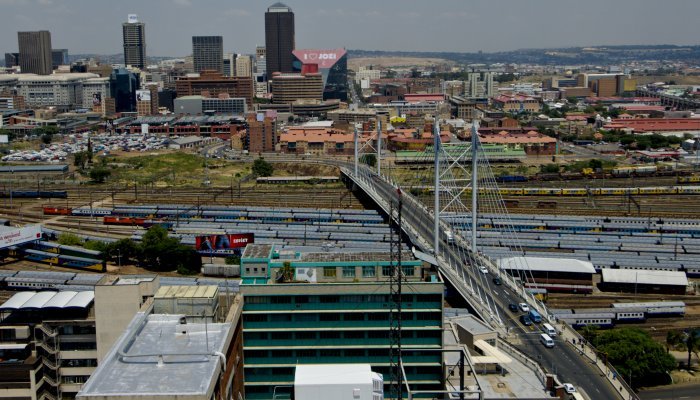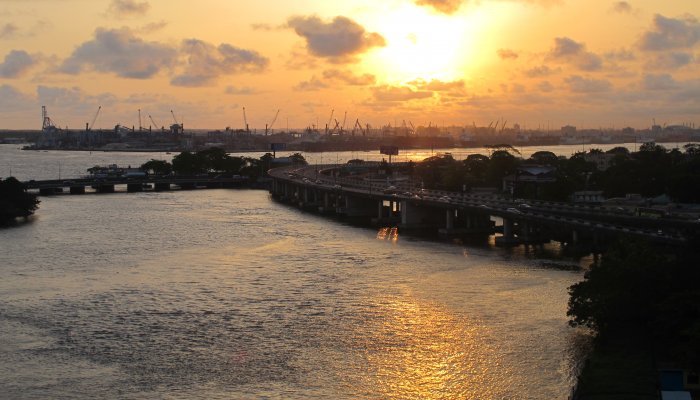The world is changing. The focus of the global economy on the Western, ‘developed’ economies has given way to a shift in global economic power to the emerging economies, and the rise of new areas of potential economic growth in a world beset by diminishing resources and economic recession. Central to this shift is the move from the nation as a focus of wealth, growth and prosperity to a focus on cities, ‘megacities’ (defined as conurbations with more than 10 million inhabitants) and city regions.
Rapid urbanisation is propelling growth across emerging markets and shifting the world’s economic balance. By 2025, says research company McKinsey, the process of urbanisation will have created a ‘consumer class’, with more than four billion people, up from a billion in 1990. Nearly half of these consumers will live in the emerging world’s cities, which are set to inject almost $25 trillion into the global economy. Of these cities, estimates McKinsey’s, 440 emerging-market cities, very few of them “megacities,” will account for close to half of expected global GDP growth between 2010 and 2025. New social, economic and political strategies that emphasize such cities are emerging in many countries and regions around the globe. These strategies take into account the new kinds of urban life developing in large city regions around the world, and how to ensure its prosperity and success.
In fact, the world’s population balance has already shifted decisively towards urbanisation. Since 2008, for the first time in history, more people live in cities than in rural areas. The urbanisation process has accelerated from only 2% living in urban areas in 1800, to around 3 billion people, or half the world’s current population. Two thirds of the world is expected to live in cities by 2050.
Of course, this rapid and widespread urbanisation is not without challenges. As people flood into urban areas, cities around the world are battling to cope with the demand for additional infrastructure and services, lack of housing, worsening environmental problems and increasing traffic congestion. As a city grows to absorb immigration and natural growth, it expands beyond its defined and planned boundaries into the sphere of influence of neighbouring cities, urban and peri-urban areas. Given not only the intense flow of people, but information, trade, finances and resources between cities, a traditional approach to planning and governance is increasingly untenable. A new approach to planning and managing these burgeoning urban areas is required.
Megacities
According to CNBC, today some three dozen cities around the world make the megacities list of over 10 million inhabitants, and by 2030, more than a dozen more will be added to this list. The vast majority of these new megacities will be in the developing world. To get some perspective on the question, London only earned megacity status in 2013, according to the UN, and even then only by dint of adding in the population of the greater urban area. Tokyo, for some time the largest global megacity, is estimated to be home to 38 million people. But yet it is elsewhere in Asia, and especially in Africa, that some of the most rapid urbanisation is taking place. Kinshasa, the capital of the DRC, will have a projected population of 20 million by 2030, and Lagos, the most populous city in Nigeria, will have over 24 million inhabitants by then.
This rapid urbanisation is fuelled of course by the search for economic opportunity in the city, but the massive rate of urban growth is placing enormous strain on the resources and infrastructure of cities designed for far fewer numbers. According to European urban thinktank Euramet, megacities now make up 2% of the earth’s surface area, but consume 75% of its resources. The imbalance will clearly impact as a huge challenge to sustainability – of food, energy, employment and other resources – and the infrastructure to support the production and supply of resources.
What this challenge amounts to is the ability of the megacity to carry the economy of a country, since, increasingly, a country’s economic strength will be measured by the success of its cities. And, according to a recent Citibank report called HotSpots 2025, such projected success boils down to ‘a city’s ability to tax, plan, legislate and enforce laws and its willingness to be held accountable by its citizens – [this] requires strong institutions’.
Megacities, according to McKinsey, will attract population growth almost twice that of anywhere else in the world in the next ten years – and that these cities will contain almost 35% of the expansion of the potential global workforce in that time.
Business strategy in these cities cannot focus on one market or potential growth factor alone. Opportunities will be greatly varied, according to factors like, for example, the balance between formal and informal employment – the provision of housing, education and other social infrastructure, and thus the potential growth of a consumer class in the megacity.
The Opportunities and Challenges
Megacities act, like all urban settlements have through history, as accelerators of growth and development. The way in which cities bring together the factors of production and consumption across the entire value chain means that there are lower transaction costs and closer markets with the potential to grow.
The major challenge to economic growth in the current situation is the rapid pace of urban change. With 70-75% of the world’s population likely to live in cities in the next 25 years, what kind of urbanisation will nurture sustainable growth?
In ensuring future growth for megacities, policy-makers have to work with big business to ensure the following, according to McKinsey: Firstly, adequate rules and regulations. Secondly, a carefully thought out urban design. And thirdly, a financial plan for city growth that ensures adequate funding for key infrastructure mechanisms and resources.
In all three areas, sadly, many emerging market cities demonstrate why these pillars are necessary: No company wants to invest in a city-economy in which the rules of law around financing and business regulations in particular, as well as property rights, are not guaranteed. Similarly, no business wants to risk investment in an urban economy in which planning is haphazard, and where congestion, pollution and informal settlement are prevalent. Lastly, urbanisation must be supported by national and regional policy to the extent that the urban centre can be run as a value-generating entity much as a business would.
The opportunities in the rapidly expanding urban sector remain the same as they always have – better access to skills, income and markets, as well as raw materials and infrastructure. If the megacity is sustainable from policy and planning perspectives, economic growth too should be sustainable.
City-regions
Another variant of the megacity, especially in the developing world, and which is perhaps more the reality of South African urbanisation, is the concept of the ‘city-region’. This is defined as a group of cities within a wider territory that have an interdependent relationship, forming a mostly economic footprint that comprises the city-region. Cities have distinct but complementary functions. They interact across local and administrative boundaries through flows of people, resources, information, finances and services. A city-region is therefore more than just a city and some nearby towns – it stretches from beyond the core city or cities to urban, semi-urban and rural areas surrounding and within commuting distance of the city. This geography can be described as the functional economy of the city-region. While city-regions are usually distinct from the original or planned administrative unit of planning for government and policy-making, which may be either the city itself or some form of provincial structure, policies which take the flows across a city-region into account can benefit the citizens of the region enormously. Such policies might focus on spatial planning, infrastructure, and service delivery across the entire city-region level and be coordinated across the local authorities who are part of the region. This would improve the efficiency of labour and housing markets, enable streamlined transport systems, and generate economic spin-offs through increased productivity, and a sharing of knowledge and innovation.
In summary, global city-regions are usually:
• Defined independently of formal administrative boundaries;
· Constituted by a concentrated urban population, with significant size and agglomeration effects that attract greater volumes of people through in-migration;
• Spread across a large geographical area that is contiguous in nature;
• Inclusive of at least one large metropolitan area; and
· Possessed of a functional economy within the geography, which is able to compete in the global market, while contributing significantly to the national output.
· Collaborative rather than competitive among their constituent towns and cities.
A few examples of global city-regions in the world include Greater London, Isle de France (Paris), the Randstad in Holland (consisting of the four cities of Amsterdam, Rotterdam, Utrecht and The Hague), Sao Paulo and Mumbai. In South Africa, Gauteng and the greater Cape Town area are considered to be primary city-regions.
Does the concept of the city-region, and how it can be planned and developed in South Africa, hold out more economic promise for us as a nation? The opportunities and challenges of the megacity trend are clear – how is South Africa’s only megacity region, Gauteng, addressing these issues to foster a more competitive urban economy? We’ll examine this more closely in the next edition of Acumen.
Two thirds of the world is expected to live in cities by 2050…
London only earned megacity status in 2013…
increasingly, a country’s economic strength will be measured by the success of its cities…
[sidebar] London: Megacity success?
A feature article in The Telegraph, published last year (http://www.telegraph.co.uk/finance/economics/11062542/), points out how London, despite being a relative latecomer to megacity status, is one of the fastest growing such cities in the developed world. This is primarily because of its pro-business economic policies, and is despite of London’s continuing pressure on house and commercial property prices brought about through over-regulated property markets. London’s recent success – between 1997 and 2012, comments a recent Economist article, London’s share of Britain’s economic output grew from 19% to 22%. Consequently, the city’s economy continues to grow as its population grows, and it continues to, as it has, suck up more than its fair share (according to critics of the megacity growth trajectory) of resources and infrastructure spend from central Government. The same article points out that the reason for the relative depression and collapse of outlying towns and cities in England is their distance from London after their commodity or industrial economies have collapsed. On the face of it, this is a circular argument about economic growth, but undeniably true when one considers the similar pattern of urban migration all over the world. As The Economist author also argues, if London is taken as a benchmark megacity – since it is well regulated and controlled – it is possible to see and measure the tangible benefits of this new kind of urbanisation – primarily on productivity, with increases per worker moving to the city of up to 30%. And yet the concomitant environmental destruction of these large conurbations is also easy to see – not something, in the longer-term, that is easy to trade off.
[sidebar] Sao Paolo: Megacity failure?
Sao Paolo, Brazil’s largest city and one of the largest in the developing world at over 20 million inhabitants, is often held up as an example of the best and worst of the contemporary surge in urbanisation globally. While its rapid expansion has resulted in a growing consumer class, an expansion of industry and services, and infrastructure, the massive influx of people seeking better opportunities has also created major challenges. The Guardian newspaper reported earlier this year (http://www.theguardian.com/cities/2015/feb/25/sao-paulo-brazil-failing-megacity-water-crisis-rationing) that water supplies in the megacity – in a country which contains 12% of the world’s drinkable reserves – have run so low that rationing is being implemented citywide, with two days’ supply followed by four day droughts. As the article points out, such scarcity of a vital resource immediately causes civil unrest and social breakdown. Other commentators often use the massive favelas, or urban slums, which characterise Sao Paolo’s urban architecture, as a case study for other social and health risks. These include everything from violent crime and gangsterism, with its concomitant drug trafficking and prostitution, to the spread of deadly disease (such as dengue fever in the wake of water supply problems), to the huge upsurge in traffic fatalities in overcrowded and under-regulated cities.








